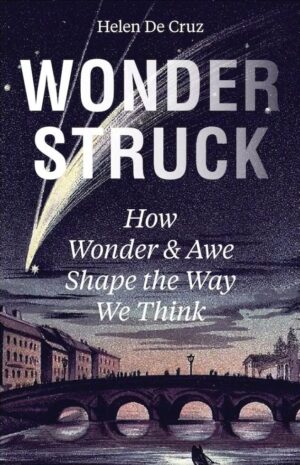The following is an excerpt is from the book Wonderstruck: How Wonder and Awe Shape the Way We Think, published by Princeton University Press and reprinted here with permission.
Don’t miss our CTT Chat with author Helen De Cruz here.
Culture in Service of Human Needs
From Chapter 1
Like other emotions, awe and wonder are part of our cultural environment. While they do have an evolutionary basis, they are culturally scaffolded. For this reason, it will be useful to briefly lay out here my overall picture of human culture and its relationship to our nature as biological and cultural creatures.
Art, philosophy, and religion lay serious claims to being true human universals. We find them in societies with widely diverging technologies, social organization, and means of subsistence. If humans across times and cultures have found these pursuits worthwhile, we should ask why this is so. The scarcity narrative that surrounds us tells us that there is no more money to make art, philosophy, and other fine culture accessible to everyone. Yet, humans who were and are much worse off, in material terms, than industrialized Westerners still spend significant time and energy on these pursuits.
The philosopher Daniel Dennett was struck by these profligacies of human culture, specifically religion, with its feasts and festivals, temples, dances, the deep reflection on sacred texts, and seemingly arbitrary constraints on what to eat and what to wear. He insists, and I agree, that this apparent “wastefulness” requires an explanation. If we observed the apparent excesses of human culture in any other species, we would try to account for their existence in biological terms. Indeed, in evolutionary biology we can see explanations for why, for example, flowers have vivid colors, bird song is elaborate, and why peacocks have lush, cumbersome tails with bold eye-spots that glisten green and purple. Dennett has an evolutionary explanation for religion: he likens our brains to those of hapless ants infested with the lancet fluke parasite. Just as the parasite commandeers the ant to climb up a blade of grass to increase its chance of ending up in a ruminant’s stomach (and hence complete the parasite’s reproductive cycle), religious ideas infest our brains, replicating themselves at our expense.
While I agree with Dennett that religions and other higher pursuits are remarkable and require an explanation, I disagree that we can explain them as self-interested cultural phenomena. As anthropologist Dan Sperber notes, you cannot explain culture with culture. Rather, my guiding assumption is that culture serves human needs and interests generated by body and mind. The products of our cultures are fitted to respond to these needs and interests, in ways that nurture and sustain us. For example, we live in artifacts (such as houses) that we build to protect us from the elements. This is not to say that human culture always comes up with optimal solutions. It also allows for the possibility of maladaptive cultural practices, or for culture to be used to manipulate, exploit, or deceive others, such as in the case of slavery as an institution in many cultures. Nevertheless, any approach to human culture should put the biological organisms that came up with it, and that live and breathe it, at its center.
Watch our interview with De Cruz about her new book on our YouTube channel.
